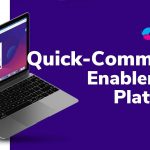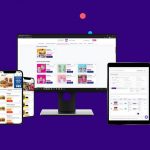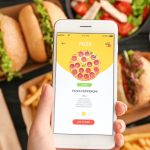The concept of food delivery apps in Saudi Arabia has spread like wildfire with an exponential increase in home deliveries seen during the COVID-19 lockdowns. While in the past, delivering food at home might have meant long phone calls and waiting times, now it’s nothing more than a few taps on your mobile phone. Food delivery apps in Saudi Arabia have never been as popular as they are now, but this popularity comes at a heavy price paid by your local restaurants.
While restaurants have managed to increase sales due to the rise in online food orders, they have had to give up a significant portion of their sales to food delivery apps. Most food delivery apps in Saudi have been charging restaurants between 10-20% on each online sale with charges going up by the day. As a result, most restaurants have struggled to stay profitable with several small chains and family-owned restaurants going out of business.
A more restaurant-friendly alternative to the traditional food aggregator model (e.g. Hunger Station and Jahez) is a quick commerce enablement platform like Blink which allows Restaurants to build their own online presences and reach their customers directly.
While aggregators like Jahez and Hunger Station allow thousands of restaurants to use a single platform and share delivery resources, their commissions are exorbitant. Restaurants have no control and visibility of their sales and customer bases either.
In contrast, online ordering platforms like Blink have allowed small and family-owned restaurants to reach their customers directly while gaining much better visibility and understanding of their customers for a significantly lower transactional charges.
Why Restaurants have been utilizing the Food Aggregator Model
Restaurants rely on third-party aggregators as they offer a one-stop solution to reaching an already established customer base, make use of an existing delivery fleet, and quickly develop a market presence.
COVID-19 lockdowns further pushed restaurants to use third-party aggregators, and rely on their delivery networks to reach customers in cities like Riyadh, Jeddah, and Khobar. Growth of new restaurants, and home kitchens has also increased the usage of food aggregators, with smaller restaurants preferring to use an existing platform with ready access to customers.
However, most consumers do not realize the implications of using food delivery apps, and how their convenience comes at a significant cost to restaurants, their suppliers, and in turn, thousands of chefs and laborers working for these restaurants.
With restaurants lacking their own quick commerce platforms, commissions of food aggregators have gone up steadily, reaching 30-40% levels in some cases.
How Quick Commerce Enablement Platforms are quickly evolving
With the traditional aggregator model delivering more harm than benefit, restaurants have started realizing the importance of having their own online presence and delivery capabilities.
Through the aggregator model, restaurants have to worry about the exorbitant and ever-increasing commission rates that range between 30 and 40%.
As a result, all types of restaurants, from large international chains to small family-owned restaurants, have struggled to stay profitable and generate enough cash for reinvestment in the growth plans of their businesses.
As a result, all-in-one, direct ordering Q-Commerce platforms like Blink have grown in presence and demand. They offer economical monthly subscriptions, only having to pay end of month dues, which allow easier cash flow management for restaurants.
Quick commerce platforms offer easy to build, plug and play solutions, resulting in very short development timelines. Quick commerce allows customers to have fast on time deliveries, making sure they get their necessities in under 60 minutes. These platforms, like Blink, allow businesses the ability to connect directly with customers, with capability to get feedback on each order, and market directly with latest offers.
How Food Delivery Apps Are Killing Your Restaurant Business
In today’s technology filled age more than 50% of the day is spent on the mobile from which 90% of the time is spent on apps, while only 10% is spent using the browser. Millennials prefer apps, as they are an easier-to-use version of a full website, comparatively more simple than the difficult processes of using a website.
Restaurants are finally realizing the value of mobile app users, as users have high expectations but very low patience. Websites do not offer the same customer service as an app does. The efficiency of communication that happens between customers and web services is much lower when compared to the personalized communication between a business and an app user. Websites mostly rely on email marketing, losing out on time sensitive deals and information as the average time to check an email message is somewhere between every 6-7 hours.
Poor communication between restaurants and their customers impacts the number of visits they make to the website which can be costly for business. If a customer chooses website ordering that means you lose the opportunity to generate an effective communication channel, when compared to the one created through a mobile app.
Customers find mobile app usage much easier as they are tailored to their preferred device. Whenever they think of buying something from your restaurant, it’s no more than one click away whereas logging into a website takes more time and effort. Mobile apps are always right there on the screen, a reminder that their favorite food is just waiting to be ordered at their earliest convenience.
Apps allow customers to take advantage of the rewards and locations according to their geolocation without having to manually update it like they would on a website.
As more and more customers turn towards online ordering it’s crucial for restaurants to start launching their own apps. Having their own apps would mean better communication and customer service which would lead to better sales.
Food delivery apps gut restaurants with high commission fees
People have always loved the convenience of eating in at home, with the spread of COVID-19 food delivery apps became the default food delivery method. Most millennials even after being phone addicts have phone anxiety and prefer to order online rather than make long phone calls to place their orders. Young people today will always check if a restaurant has a food delivery option online before they even think about calling.
The profit margins for restaurants are becoming thinner and thinner, hovering between 6-7% for many restaurants. Restaurants have had no other choice but to sign up with third party delivery services to fulfill their customers’ demands. At the start of the COVID-19 pandemic many restaurateurs thought third party delivery services were the answer to their prayers but commission fees are rising even as the world is opening up again.
As their services grew more and more popular, order providers started demanding an even bigger piece of the pie. Today, restaurants are paying as much as 30% commission for each order made to service providers like UberEats and Hunger station. These commissions make a huge dent to the restaurant earnings, making it very hard to stay profitable, especially because it’s the restaurants that pay the rent, the labor, the supplies and much more.
Restaurants have started to voice their concerns about third party delivery services but still feel obligated to use them as they don’t offer their own delivery services and feel the need to compete with rival restaurants.
Cannibalization of Customers
Restaurants are taking a hit from the delivery commission fees as almost a third of the profit is going towards them. Restaurateurs believe they would be able to handle the costs if the dine-in meals were still as lucrative as they were in the past. Dine-in meals meant no extra cost, with all the profit in their pockets. However, in these technology and COVID filled times restaurants are seeing the number of them dine-in customers decreasing by the day. Whereas the percentage of the takeout customers is increasing and with them their commission fees.
Food delivery apps are allowing diners to leave the hassle of going to the restaurants in the past while getting the food they crave in their pjs. As a cost conscious society customers are encouraged to replace dine-in with take away to save any extra expenses that come in with leaving the house. Diners reason that by sacrificing the dine-in experience of a restaurant they save 15- 20% in tips money and the extra costs they’d be spending on lavish drinks and desserts.
What customers sometimes don’t realize is that apps like Uber Eats have their own service fees which they charge the customers apart from the commissions they take from the restaurants. These service fees are not paid to the drivers doing the delivery but go towards the company making it an additional cost that customers end up paying.
Despite the customers shelling out more money the restaurants still don’t profit much and barely break even, if that, with each delivery made.
How Blink’s Quick Commerce Can Help your Restaurant Business Flourish in Saudi Arabia
An online ordering system link Blink can allow customers to place online orders directly with restaurants, bypassing the traditional food aggregator apps and platforms. With restaurants increasingly generating a bigger portion of their sales from online orders, specially post COVID-19 lockdowns, it is safe to say that having their own digital fronts can greatly help restaurants boost their sales and profitability.
With quick commerce platforms like Blink, orders are received directly from the customers and sent to the restaurant kitchens, eliminating the need for food aggregator apps and also avoiding errors that can occur with reception or front staff receiving orders manually.
Having a user-friendly interface also makes the ordering process easier for end-customers, ensuring that they have a seamless experience. This convenience can be a major driver of sales and customer satisfaction.
Restaurants in Saudi Arabia can hugely benefit from having their own digital fronts and presences, especially in cities like Riyadh, Jeddah, and Khobar where competition in food delivery is fierce and new trends emerge every day.
To manage this level of competition, it is critical for restaurants to have a very focused marketing approach and develop a strong understanding of their online customers’ demographic profiles. Knowing the order patterns, trends, and preferences can help restaurants design targeted marketing strategies, and deliver captivating content for each segment of their customer base.
Why do restaurants in Saudi Arabia need Quick Commerce?
With high digitization levels in KSA, and the majority of the population belonging to a young age group, it is imperative that restaurants develop strong online and social media presence. As such, linking online ordering platforms to social media like Instagram and Facebook can also generate higher sales from first time customers, who are looking to get detailed feedback and reviews from other users.
Blink can also help restaurants in large cities like Riyadh, and Jeddah, to gather granular data on customer orders and trends, popularity of specific products, changes in market trends, as well as better control over quality of food and deliveries. Such visibility of order and sales data can also help restaurants eliminate inefficiencies throughout their value chain, and allows them to significantly reduce wastage of food, and resources.
Platforms like Blink also help restaurants build longer term customer loyalty, and have more stable sales. Through targeted marketing, customer level discounts, and offers tailored to local demand, restaurants can build strong loyalty from their customer base so they keep coming back for more orders.
Designing and managing loyalty programs can also become easier for restaurants, with unrestricted access to customer and sales data. Loyalty programs can be built into the online ordering platforms, so the experience of earning loyalty rewards and using them for discounts is as seamless as possible. Physical loyalty cards also then become obsolete, and customers are able to retain and use their points with ease.
Conclusion
Food delivery apps are becoming more and more popular in Saudi Arabia, helping raise the sales of restaurants but swirly dwindling down their profits. Food apps are supposed to make food delivery easier for the existing customers and bring in more customers in the future. Quick commerce is the answer that restaurants in KSA have been looking for. Companies with quick commerce solutions like Blink develop apps and websites for restaurants as per their client’s demands.
Blink offers QCommerce to Restaurants, Supermarkets and Consumer Retail brands so that you can provide the best on-demand delivery service to your customers where items are delivered to their doorsteps within the hour. We provide a toolkit that facilitates entering the Quick Commerce ecosystem at a very low cost, helping you revolutionize the future of your business.





